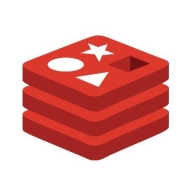

InfluxDB and Redis are competitive in the database realm, each focusing on specific features to excel in distinct use cases. Redis stands out with overall superior performance capabilities, while InfluxDB offers significant strengths in usability and analytics for time-series data.
Features:InfluxDB offers features like high-resolution time-series data handling, efficient data compression, and real-time analytics capabilities, essential for applications requiring detailed data monitoring. Redis is known for fast in-memory data storage, high-speed access, and providing versatile solutions for caching and session storage.
Room for Improvement:InfluxDB could improve in terms of customer support responsiveness, user interface complexity for casual users, and optimizing setup costs for smaller-scale deployments. Redis might enhance support for more complex queries, provide better persistence mechanism options, and offer deeper integration capabilities with external tools for more comprehensive data management.
Ease of Deployment and Customer Service:InfluxDB allows for streamlined cloud deployment with built-in time-series data support, although customer support responsiveness varies. Redis provides robust deployment flexibility with options like managed solutions and on-premise setups, backed by a reputation for highly responsive and efficient customer support.
Pricing and ROI:InfluxDB involves higher initial setup costs, with focus on time-series data capabilities bringing value through detailed analytics. Redis tends to offer lower setup costs, providing quick returns on investment by leveraging its in-memory data store benefits for fast performance. Redis is perceived as yielding quicker ROI due to its speed and efficient performance, making it a cost-effective choice for long-term use.
| Product | Market Share (%) |
|---|---|
| InfluxDB | 6.9% |
| Redis | 8.9% |
| Other | 84.2% |


| Company Size | Count |
|---|---|
| Small Business | 4 |
| Midsize Enterprise | 3 |
| Large Enterprise | 6 |
| Company Size | Count |
|---|---|
| Small Business | 11 |
| Midsize Enterprise | 3 |
| Large Enterprise | 8 |
InfluxDB is open-source software that helps developers and enterprises alike to collect, store, process, and visualize time series data and to build next-generation applications. InfluxDB provides monitoring and insight on IoT, application, system, container, and infrastructure quickly and easily without complexities or compromises in scale, speed, or productivity.
InfluxDB has become a popular insight system for unified metrics and events enabling the most demanding SLAs. InfluxDB is used in just about every type of industry across a wide range of use cases, including network monitoring, IoT monitoring, industrial IoT, and infrastructure and application monitoring.
InfluxDB offers its users:
InfluxDB Benefits
There are several benefits to using InfluxDB . Some of the biggest advantages the solution offers include:
Reviews from Real Users
InfluxDB stands out among its competitors for a number of reasons. Two major ones are its flexible integration options and its data aggregation feature.
Shalauddin Ahamad S., a software engineer at a tech services company, notes, “The most valuable features are aggregating the data and the integration with Grafana for monitoring.”
Redis offers high-speed, in-memory storage, renowned for real-time performance. It supports quick data retrieval and is used commonly in applications like analytics and gaming.
Renowned for real-time performance, Redis delivers high-speed in-memory storage, making it a favorite for applications needing quick data retrieval. Its diverse data structures and caching capabilities support a broad array of use cases, including analytics and gaming. Redis ensures robust scalability with master-slave replication and clustering, while its publish/subscribe pattern renders it reliable for event-driven applications. The solution integrates smoothly with existing systems, minimizing performance tuning needs. Although documentation on scalability and security could be improved, Redis remains cost-effective and stable, commonly utilized in cloud environments. Enhancing integration with cloud services like AWS and Google Cloud and refining GUI may improve usability.
What are the key features of Redis?Redis finds application across industries for tasks like caching to improve application performance and speed, minimizing database load. It enables real-time processing for session storage, push notifications, and analytics. As a messaging platform, Redis handles high traffic and supports replication and clustering for cross-platform scalability.
We monitor all NoSQL Databases reviews to prevent fraudulent reviews and keep review quality high. We do not post reviews by company employees or direct competitors. We validate each review for authenticity via cross-reference with LinkedIn, and personal follow-up with the reviewer when necessary.